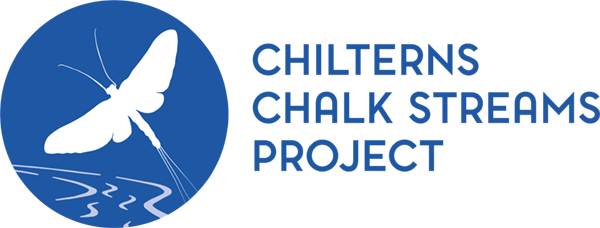
Wildlife
The water that feeds chalk streams rises in springs from the chalk aquifer below, producing ‘gin clear’ waters, which remain at a constant temperature year-round. This, combined with the high nutrients levels and lush vegetation in and around the streams means they are exceptionally good for wildlife.
Plants
The iconic plant of chalk streams is water crowfoot (a Ranunculus). This plant is a true engineer of the chalk stream. Peak growth of water crowfoot in the summer co-incides with declining water levels in chalk streams. The extra plant growth contricts the flow into a narrower channel, so the water remains deep enough where it does flow for larger fish to survive.
Water crowfoot isn’t the only plant to look out for – watercress, water starwort and sweet smelling water mint can all be spotted throughout the Chilterns streams.
Invertebrates
Chalk streams teem with invertebrate life from the green drake mayfly to the truly spectacular banded demoiselle. Many of these invertebrates such as mayflies and caddisflies lay their eggs in the water. The animals often spend most of their lives underwater, only emerging as flying adults for a few days or weeks in order to mate and start the whole cycle again.
Fish
Chilterns streams are home to a host of smaller fish like minnow, bullhead (also known as Miller’s thumb) and nine spined sticklebacks. Brown trout and the beautiful grayling lay their eggs in the gravels of chalk streams. Pike can be spotted hiding out under bridges and stones waiting to ambush prey.
Birds
Bird species such as heron, kingfisher and water rail abound and the river is an important wintering ground for sandpiper, jack snipe, teal and gadwall. Rivers are also vital for summer visitors – swallows can often be found enjoying the flying insect feast provided by chalk streams after their long journey from southern Africa.
Mammals
Water voles, the UK’s fastest declining mammal, can still be found in the Chilterns. A population has held on along the Chess thanks to the work of local volunteers. Watervoles have also been re-introduced to the R. Ver and R. Bulbourne in recent years.
Otters are occasionally spotted too, along with a range of land mammals who use chalk streams as a conveninet water source and wildlife corridor linking areas of good habitat.






























